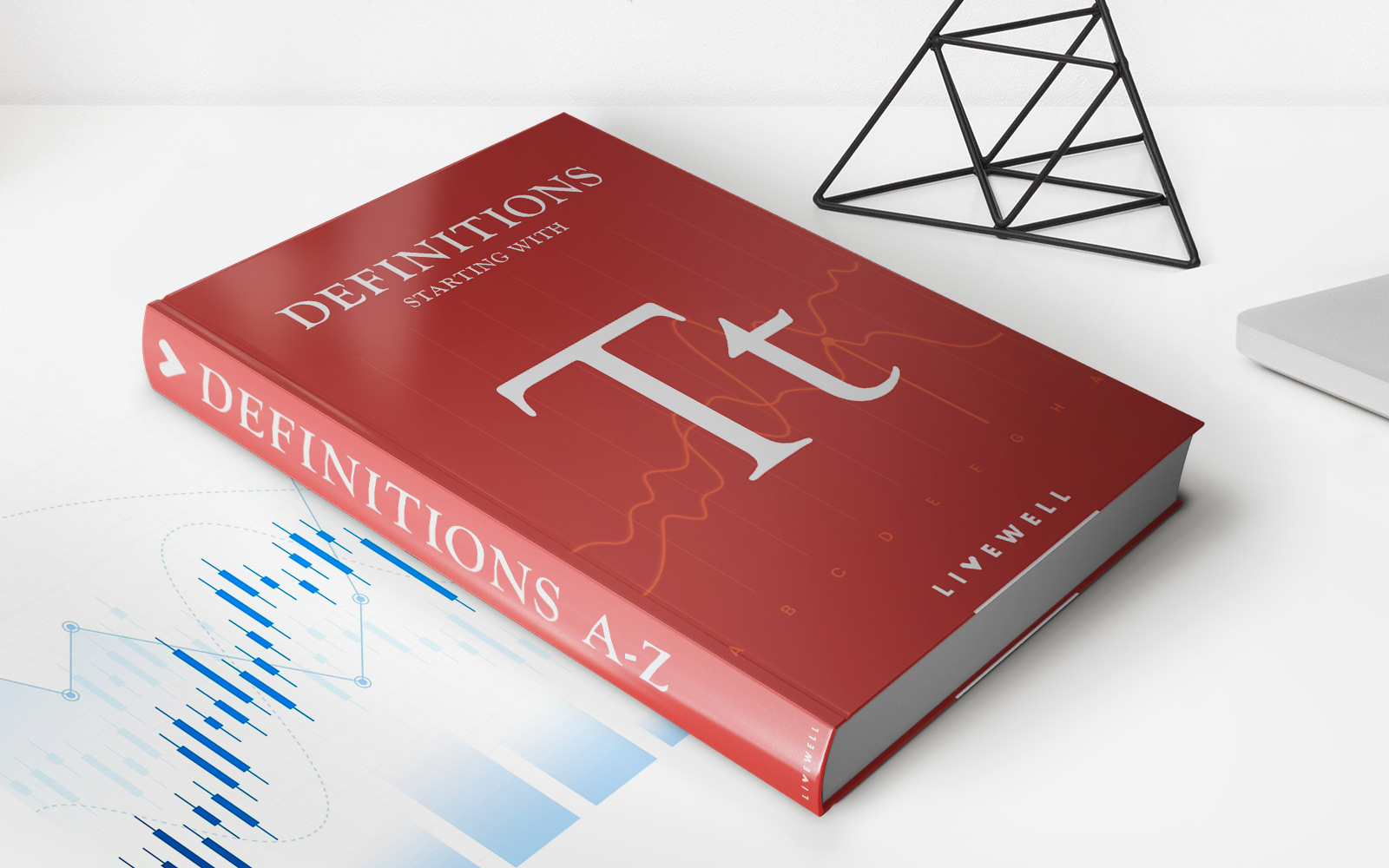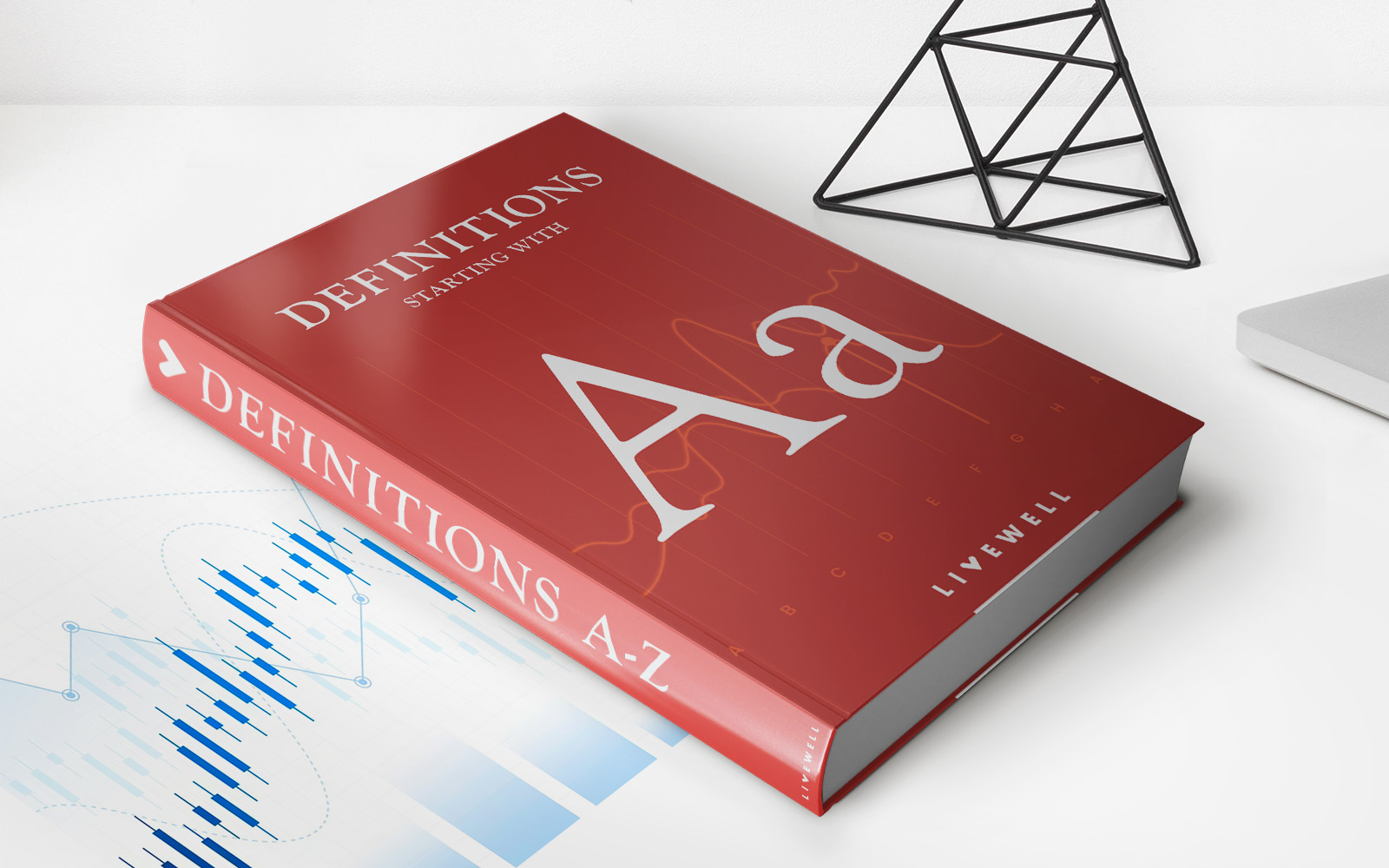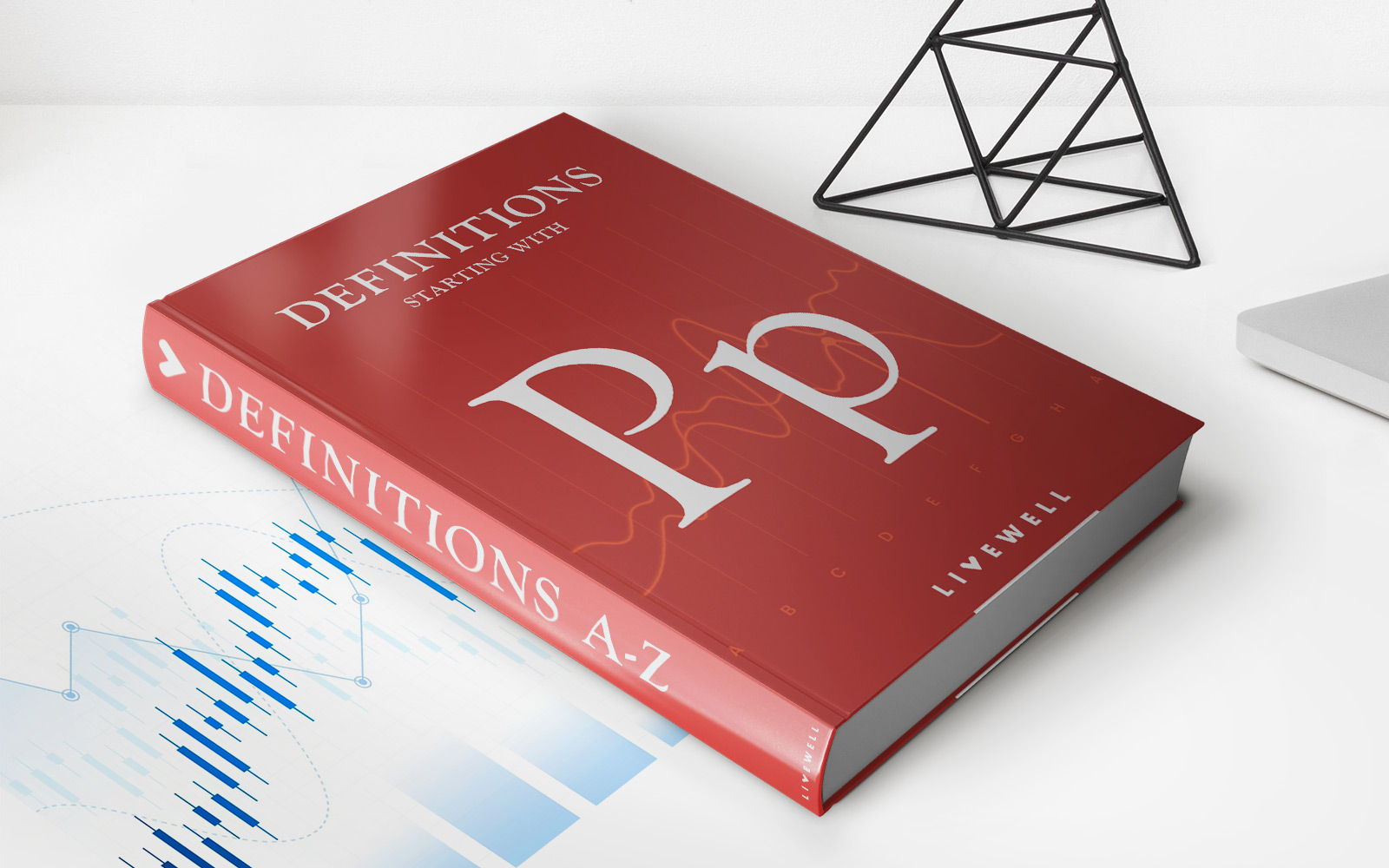

Finance
What Is Table Funding
Published: December 22, 2023
Learn about table funding in the world of finance and how it works. Discover its benefits and drawbacks and make informed financial decisions.
(Many of the links in this article redirect to a specific reviewed product. Your purchase of these products through affiliate links helps to generate commission for LiveWell, at no extra cost. Learn more)
Table of Contents
Introduction
Welcome to the world of finance where complex concepts and terminologies abound. One such concept that is commonly used in the lending industry is “table funding.” If you’re new to the world of finance or considering getting a loan, it’s important to understand what table funding entails and how it could affect your borrowing experience.
Table funding refers to a process in which a mortgage loan is funded by a third-party investor or lender. This means that the initial lender, who may have originated the loan, does not provide the funds needed for the mortgage. Instead, they rely on an external entity to supply the necessary capital to complete the loan transaction.
During the table funding process, multiple parties work together to facilitate the loan. This includes mortgage brokers, loan officers, investors, and closing agents. Each of these individuals plays a unique role in ensuring that the funds are acquired, the loan is closed, and the borrower receives the financing they need.
The table funding process typically involves several stages. First, the borrower submits their loan application to the lender, who then evaluates their creditworthiness and determines if they meet the necessary requirements. Once approved, the lender secures a commitment from an investor or funding source to provide the funds for the loan. The investor then wires the funds to the closing agent, who distributes the funds accordingly.
One key advantage of table funding is that it enables lenders to offer a wider range of loan options to borrowers. By relying on external investors or funding sources, lenders have the flexibility to provide loans that may not fit their own portfolio or risk appetite. This means borrowers have access to a greater variety of loan products, potentially increasing their chances of finding the financing that best suits their needs.
However, there are also potential downsides to table funding. Since the original lender is not directly providing the funds, they may have less control over the loan process and the overall experience for the borrower. Communication and coordination issues can arise among the various parties involved, potentially leading to delays or complications during the closing process.
It’s important for borrowers to be aware of the table funding process and its implications before entering into a loan agreement. By understanding how the funding is sourced and the role of different parties, borrowers can make more informed decisions and better navigate the complexities of the lending industry.
In the following sections, we will delve deeper into the table funding process, the key parties involved, the advantages and disadvantages, and the regulatory considerations that lenders and borrowers need to be mindful of. So, let’s continue our journey into the fascinating world of table funding.
Definition of Table Funding
Table funding, in the context of lending and mortgages, refers to a process where a mortgage loan is funded by a third-party investor or lender. Essentially, the original lender does not provide the funds necessary to complete the loan transaction, but relies on an external entity to supply the capital.
When a borrower applies for a mortgage loan, the lender evaluates their creditworthiness and financial situation. If the lender approves the loan, they secure a commitment from an investor or funding source to provide the necessary funds. These funds are then forwarded to the closing agent, who distributes them accordingly.
The term “table funding” itself is derived from the practice of sitting around a table and finalizing the loan transaction. The table serves as a metaphorical representation of the coordination and collaboration among the various parties involved in the funding process.
Table funding is commonly used in the mortgage industry to facilitate the lending process, as it allows lenders to provide a broader range of loan options to borrowers. By relying on external investors or funding sources, lenders can offer loans that may not fit their own portfolio or risk appetite.
Table funding is often used in situations where the original lender does not have the necessary funds or resources to provide the loan themselves. It allows smaller lenders, such as mortgage brokers or credit unions, to leverage the expertise and capital of larger financial institutions or investors.
In the table funding process, there is typically a seamless transfer of funds from the investor to the closing agent. The closing agent disburses the funds for various purposes, such as paying off existing loans, covering closing costs, and providing the remaining balance to the borrower.
It’s important to note that table funding is not limited to mortgage loans. In some cases, it may also apply to other types of loans, such as auto loans or personal loans, where the original lender relies on a third-party funder to provide the necessary funds.
Overall, table funding is a vital component of the lending industry, enabling lenders to offer a diverse range of loan products and providing borrowers with access to financing options that suit their individual needs. Understanding the definition and mechanics of table funding is essential for both lenders and borrowers in navigating the world of lending and making informed decisions.
Table Funding Process
The table funding process involves several stages and the collaboration of multiple parties to facilitate a mortgage loan. Let’s take a closer look at the key steps involved in the table funding process.
1. Loan Application: The borrower initiates the process by submitting a loan application to the lender. The lender assesses the borrower’s creditworthiness and financial situation to determine if they meet the necessary requirements for the loan.
2. Loan Approval: Once the loan application is received, the lender evaluates the borrower’s credit history, employment status, income, and other relevant factors to determine if they qualify for the loan. If approved, the lender proceeds with the loan process.
3. Funding Commitment: After approving the loan, the lender secures a commitment from an investor or funding source to provide the funds necessary for the mortgage. This commitment confirms that the lender will have the necessary capital to fund the loan.
4. Closing Agent Selection: The lender selects a closing agent who will oversee the loan closing process and ensure that all legal and financial obligations are met. The closing agent typically acts as an intermediary between the lender, borrower, and investor.
5. Document Preparation: The closing agent prepares the necessary loan documents, including the promissory note, deed of trust, and other relevant paperwork. These documents outline the terms and conditions of the loan agreement and are signed by the borrower and lender.
6. Funding Wire: Once the loan documents are completed, the investor wires the funds to the closing agent. The closing agent receives and verifies the funds to ensure they match the required loan amount.
7. Distribution of Funds: The closing agent distributes the funds according to the designated recipients. This includes paying off any existing loans, covering closing costs, and disbursing the remaining balance to the borrower.
8. Loan Servicing: After the loan is funded, the servicing of the loan, including collecting payments, managing escrow accounts, and addressing borrower inquiries, may be transferred to a loan servicer. This entity is responsible for administering the loan on behalf of the investor or lender.
Throughout the table funding process, communication and coordination among the various parties involved is crucial. This ensures that all necessary steps are completed accurately and efficiently, minimizing delays or complications during the loan closing and funding process.
It’s important for borrowers to be aware of the table funding process and to communicate openly with the lender and closing agent to address any questions or concerns they may have. By understanding each step of the process, borrowers can have a smoother and more transparent experience when obtaining a mortgage loan.
Key Parties Involved in Table Funding
In the table funding process, various parties collaborate to facilitate the funding and closing of a mortgage loan. Let’s take a closer look at the key parties involved and their roles in this process.
1. Borrower: The borrower is the individual or entity seeking a mortgage loan. They submit the loan application, provide the necessary documentation, and are responsible for repaying the loan according to the agreed-upon terms.
2. Lender: The lender is the financial institution or entity that originates the loan and evaluates the borrower’s eligibility. They may also act as the loan servicer or contract with a third-party servicer to manage the loan after funding.
3. Investor: The investor is the entity that provides the funds for the loan. In table funding, the investor is typically a third-party funding source, such as a bank, private individual, or government-sponsored entity. The investor relies on the lender to originate the loan on their behalf.
4. Mortgage Broker: The mortgage broker acts as an intermediary between the borrower and the lender. They assist the borrower in finding suitable loan options, completing the loan application, and gathering the necessary documentation. In some cases, the mortgage broker also plays a role in securing the funding commitment from the investor.
5. Loan Officer: The loan officer works for the lender and acts as the main point of contact for the borrower. They assess the borrower’s financial situation, guide them through the loan application process, and facilitate communication between the various parties involved.
6. Closing Agent: The closing agent, also known as the escrow agent or settlement agent, is responsible for overseeing the loan closing process. They ensure that all legal and financial obligations are met, prepare the necessary loan documents, coordinate the transfer of funds, and oversee the distribution of funds to the appropriate parties.
7. Title Company: The title company conducts a title search on the property to verify its ownership and to ensure that there are no liens or other issues that could affect the transaction. They provide title insurance to protect the lender and buyer against potential losses related to title disputes.
8. Appraiser: The appraiser assesses the value of the property to determine its fair market value. This valuation is essential in determining the loan amount, as lenders typically lend a percentage of the property’s appraised value.
9. Real Estate Agent: While not directly involved in the funding process, the real estate agent assists the borrower in finding and purchasing a property. They provide guidance, negotiate the terms of the purchase agreement, and work closely with the closing agent to ensure a smooth closing process.
Each of these parties has a specific role and contributes to the successful completion of the table funding process. Clear communication, collaboration, and coordination among these key players are vital to ensure a seamless and efficient loan closing and funding experience for the borrower.
Advantages of Table Funding
Table funding offers several advantages for both lenders and borrowers in the mortgage industry. Let’s explore some of the key benefits of employing table funding as a funding method.
1. Increased Loan Options: Table funding enables lenders to offer a wider range of loan options to borrowers. By relying on external investors or funding sources, lenders have the flexibility to provide loans that may not fit their own portfolio or risk appetite. This means borrowers have access to a greater variety of loan products, potentially increasing their chances of finding the financing that best suits their needs.
2. Faster Loan Processing: Table funding can expedite the loan processing time. Since the funds are provided by an external investor, the lender can focus on evaluating the borrower’s creditworthiness and processing the loan application, rather than sourcing and securing the funds. This can result in quicker loan approval and closing times, allowing borrowers to access the funds they need in a more timely manner.
3. Access to Capital: Table funding allows lenders to overcome capital constraints and provide financing to borrowers even when their own resources are limited. This is particularly beneficial for smaller lenders, such as mortgage brokers or credit unions, who may not have substantial funds of their own to lend. By partnering with external investors, these lenders can still offer competitive loan terms and meet the borrowing needs of their clients.
4. Mitigated Risk: By engaging external investors or funding sources through table funding, lenders can diversify and mitigate their risk. If a loan defaults, the lender is not solely responsible for absorbing the losses. Instead, the investor who provided the funding shares in the risk and potential loss. This risk-sharing aspect of table funding can provide a level of protection for lenders and help maintain a stable lending environment.
5. Specialized Expertise: Table funding allows lenders to leverage the expertise of external investors or funding sources. These investors often have specialized knowledge in specific loan types or industries, which can be beneficial for borrowers seeking loans with unique requirements or niche markets. By accessing this specialized expertise, borrowers can receive more tailored loan options and potentially secure favorable terms.
6. Increased Competition: The use of table funding creates a competitive marketplace for borrowers. With multiple lenders partnering with various investors or funding sources, there is more competition to attract borrowers. This can result in more favorable loan terms, lower interest rates, and better overall loan packages for borrowers.
Overall, table funding provides significant advantages for both lenders and borrowers. It expands loan options, accelerates the loan process, mitigates risk for lenders, and fosters competition in the lending market. By understanding these benefits, borrowers can make informed decisions when seeking mortgage financing and lenders can utilize table funding to enhance their lending capabilities.
Disadvantages of Table Funding
While table funding offers several advantages, there are also potential disadvantages that borrowers and lenders should be aware of. Let’s explore some of the key drawbacks associated with table funding.
1. Lack of Control: One of the primary disadvantages of table funding is that the original lender may have less control over the loan process. Since the funds are being provided by a third-party investor, the lender may have limited say in the decision-making process and the overall borrower experience. This lack of control can lead to potential communication and coordination issues, which may result in delays or complications during the loan closing process.
2. Coordination Challenges: Table funding involves multiple parties working together, including the lender, investor, closing agent, and other intermediaries. Coordinating and managing the activities of these different parties can be complex and time-consuming. The potential for miscommunication or delays arises when parties have different agendas, timelines, or priorities, which can impact the overall efficiency and effectiveness of the loan process.
3. Additional Costs: Table funding often involves additional fees and costs. Lenders may be required to pay fees or a percentage of the loan amount to the investor for providing the funds. These costs can be passed on to the borrower in the form of higher interest rates or closing costs. It’s important for borrowers to carefully review the terms and costs associated with table funding to determine if it aligns with their financial goals and resources.
4. Potential for Disruptions: If the relationship between the lender and the investor deteriorates or if the investor becomes unable or unwilling to provide the funds, it can create disruptions in the loan process. This can lead to loan rejections, delays, and the need to seek alternative funding sources, which can be burdensome for both the borrower and the lender.
5. Limited Flexibility: Since a third-party investor is providing the funds, the lender may have limited flexibility in terms of customizing the loan terms to meet specific borrower needs. The lender must adhere to the terms and conditions set by the investor, which may restrict the lender’s ability to offer personalized loan options or negotiate certain terms with the borrower.
6. Regulatory Considerations: Table funding may be subject to regulatory requirements and compliance measures. Lenders must ensure that they adhere to all relevant laws and regulations, including those related to investor agreements, consumer protection, disclosure requirements, and fair lending practices. Failing to comply with these regulations can lead to legal consequences and reputational damage for the lender.
It’s important for both borrowers and lenders to carefully weigh the advantages and disadvantages of table funding. While it can provide access to capital, increase loan options, and foster competition, the potential lack of control, coordination challenges, and additional costs should be considered. By understanding these drawbacks, borrowers and lenders can make informed decisions and effectively navigate the table funding process.
Comparison with Other Funding Methods
Table funding is just one of several funding methods used in the lending industry. Let’s compare table funding with other common funding methods to understand their similarities, differences, and potential benefits.
1. Portfolio Lending: Portfolio lending refers to when a lender uses its own funds to originate and hold onto loans in its portfolio. Unlike table funding, where the funds come from external investors, portfolio lenders fund the loans using their own capital. This gives them more control over the loan terms, underwriting criteria, and the overall borrower experience. However, portfolio lenders may have more limited loan options compared to lenders who utilize table funding.
2. Warehouse Lending: Warehouse lending involves a line of credit provided by a financial institution to a mortgage lender. The mortgage lender uses this line of credit to fund loans, which are then sold to secondary market investors or packaged into mortgage-backed securities. Unlike table funding, where the funds come directly from an external investor, warehouse lending provides the lender with a revolving line of credit to fund loans. Warehouse lending can offer more flexibility and control for the lender. However, it requires the lender to have sufficient warehouse lines and may have stricter underwriting and funding requirements.
3. Direct Lending: Direct lending refers to when a lender funds loans using its own capital without involving external investors or funding sources. This means that the lender is solely responsible for providing the funds to borrowers. Direct lending offers the most control and flexibility for the lender since they are not relying on external parties. However, lenders may have a limited capacity to fund loans and may have a narrower range of loan products compared to lenders that utilize table funding.
4. Securitization: Securitization involves bundling loans together and selling them as asset-backed securities to investors. In this process, the loans are pooled together to create a security that can be traded in the secondary market. Securitization offers lenders a way to free up capital by selling the loans and transferring the risk to investors. However, securitization is a more complex process that requires extensive due diligence, legal documentation, and compliance with regulatory requirements.
When comparing table funding with these other funding methods, it becomes clear that each approach has its own advantages and disadvantages. Table funding allows lenders to leverage external investors for capital, offering a wider range of loan options and potential cost savings. However, it may involve coordination challenges and potential limitations on customization. Other funding methods, such as portfolio lending or direct lending, provide more control and flexibility but may have limitations on resources or loan options.
The choice of funding method ultimately depends on the lender’s business model, resources, and risk appetite, as well as the borrower’s needs and preferences. It’s important for lenders to carefully evaluate the pros and cons of each funding method and choose the approach that aligns with their strategic objectives and enables them to effectively serve their borrowers.
Regulatory Considerations for Table Funding
When it comes to table funding, there are several regulatory considerations that lenders and borrowers need to be mindful of. These regulations aim to protect consumers, ensure fair lending practices, and maintain the integrity of the lending industry. Let’s explore some of the key regulatory considerations associated with table funding.
1. Truth in Lending Act (TILA): The Truth in Lending Act requires lenders to disclose key terms and costs associated with the loan to borrowers. This includes providing the borrower with the Annual Percentage Rate (APR), loan amount, interest rate, and any fees or penalties. Lenders utilizing table funding must ensure that all required information is accurately disclosed to borrowers in a clear and understandable manner.
2. Real Estate Settlement Procedures Act (RESPA): RESPA regulates the process of closing mortgage loans and requires lenders to provide borrowers with a Good Faith Estimate (GFE) of closing costs. Lenders utilizing table funding must ensure compliance with RESPA’s requirements regarding the timely provision of disclosures and the prohibition of certain referral fee arrangements.
3. Equal Credit Opportunity Act (ECOA): The ECOA prohibits discriminating against borrowers based on factors such as race, religion, gender, or marital status. Lenders utilizing table funding must ensure they comply with ECOA’s provisions to provide equal access to credit opportunities for all borrowers.
4. Anti-Money Laundering (AML) Regulations: AML regulations require financial institutions, including those involved in table funding, to implement procedures to detect and prevent money laundering and terrorist financing. This includes conducting thorough due diligence on borrowers, monitoring transactions, and reporting any suspicious activities to the appropriate authorities.
5. Consumer Financial Protection Bureau (CFPB) Regulations: The CFPB oversees and enforces various regulations aimed at protecting consumers in the financial marketplace. Lenders utilizing table funding must comply with regulations such as those related to mortgage servicing, loan originator compensation, and fair lending practices.
6. State-Specific Regulations: In addition to federal regulations, lenders must also be familiar with and adhere to state-specific laws and regulations. State laws may have additional requirements such as licensing, escrow account regulations, interest rate limitations, or disclosure requirements that lenders must comply with when engaging in table funding.
It is crucial for lenders to establish robust compliance management systems to ensure they meet all applicable regulatory requirements. This may involve maintaining accurate records, conducting regular audits and self-assessments, and staying up to date with any regulatory updates or changes that may impact table funding practices.
Borrowers should also be aware of their rights and protections under these regulations. They should carefully review all loan documents and disclosures provided by the lender and ask questions if anything is unclear. If borrowers believe their rights have been violated, they can file complaints with the appropriate regulatory authorities or seek legal assistance.
By adhering to these regulatory considerations, lenders and borrowers can ensure that table funding transactions are conducted in a fair, transparent, and compliant manner. This contributes to a trustworthy and well-regulated lending environment for all parties involved.
Conclusion
Table funding plays a significant role in the mortgage industry, providing lenders with the ability to offer a diverse range of loan options and borrowers with access to necessary financing. Understanding the definition, process, advantages, disadvantages, and regulatory considerations associated with table funding is crucial for both lenders and borrowers.
Table funding allows lenders to partner with external investors or funding sources to secure the necessary capital for mortgage loans. This expands loan options, accelerates the loan process, mitigates risk, and fosters competition in the lending market. However, the potential lack of control, coordination challenges, and additional costs should be carefully considered when utilizing table funding.
Other funding methods, such as portfolio lending, direct lending, warehouse lending, and securitization, offer their own benefits and limitations. Lenders must assess the specific needs of their borrowers and their own business objectives to determine the most suitable funding method.
Regulatory considerations, such as TILA, RESPA, ECOA, AML regulations, CFPB regulations, and state-specific laws, impose obligations on lenders and borrowers to ensure compliance with consumer protection, fair lending, and financial integrity requirements.
Ultimately, table funding serves as a mechanism for lenders to leverage external resources and provide borrowers with access to diverse loan options. Understanding the advantages, disadvantages, and regulatory considerations of this funding method is essential for both parties involved in the lending process to ensure transparency, fairness, and compliance.
As the lending industry continues to evolve, it’s crucial for lenders and borrowers to stay informed about the latest developments, regulations, and best practices surrounding table funding. With this knowledge, they can navigate the complexities of the lending landscape, make informed decisions, and establish strong and mutually beneficial lending relationships.














